Treating
Keratoconus
London | Birmingham | Leeds
Speak to our specialists
Latest keratoconus treatment with the team involved in the development of Cross-Linking (CXL) treatment — and first UK clinic to provide it.
London | Birmingham | Leeds
Speak to our specialists
Latest keratoconus treatment with the team involved in the development of Cross-Linking (CXL) treatment — and first UK clinic to provide it.
I flew to London from Canada to do the cross-linking for my keratoconus at Accuvision… Everything about my experience was (and still is) perfect.
They personalised every aspect of my care so that I achieved the best vision possible with my condition. I have been able to achieve 20/20 vision…
I had Corneal Collagen Cross-linking carried out to both eyes and have now achieved the visual standard required for commercial pilots.
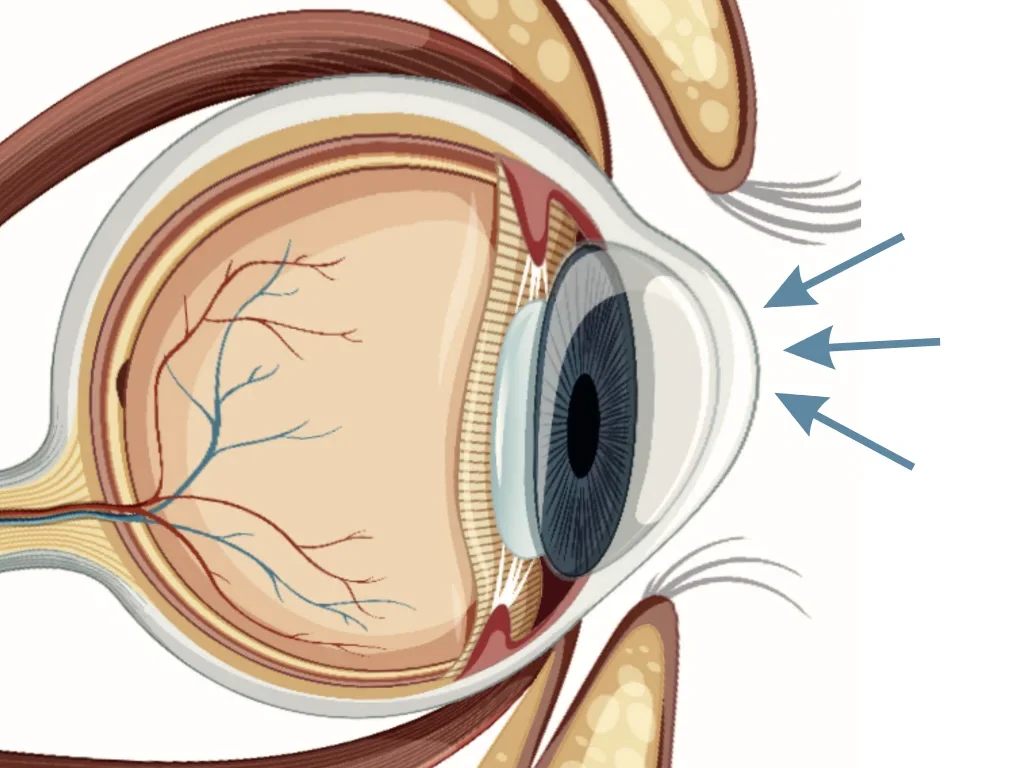
Keratoconus is a condition that weakens and thins the cornea (the transparent window at the front of the eye). This results in a cornea that has a ‘cone-shaped’ forward bulge, leading to myopia (short-sightedness), astigmatism (blurry vision), or severe vision loss if left untreated.
Keratoconus can come in various forms and severity levels, but some common symptoms include:
Parents with Keratoconus should ensure their children’s eyes are examined from the age of 10 at a specialised clinic equipped to detect the condition early.
Intense, repeated eye-rubbing can cause keratoconus — especially when using the back of the knuckle. This is the #1 most dangerous, avoidable risk factor for Keratoconus.
Keratoconus usually starts in teenage years — but can show up in childhood or later on in adulthood.
People with hay fever or atopic conditions, like eczema, are more prone to eye-rubbing.
Makes your eyes feel dryer and leads to more eye-rubbing. Smoking can also cause meibomian gland dysfunction, drying out your eyes and causing more friction.
Dry or windy environments, or poorly fitting contact lenses, can make your eyes dryer and result in more eye-rubbing.
Collagen disorders include Ehlers-Danlos Syndrome (EDS), Marfan Syndrome and Ostogenesis Imperfecta.
According to a study in the European Journal of Human Genetics, some of the genes involved in these disorders play a role in Keratoconus.
A study published in Frontiers of Medicine showed that lower testosterone levels in both male and female Keratoconus patients and higher estradiol levels in male Keratoconus patients may contribute to corneal thinning and steepening — which are characteristic of KC.
Certain disorders like diabetes, Down syndrome, and sleep apnea make keratoconus more likely.
Well-fitted lenses can help with maximising vision, but can’t treat keratoconus as they don’t stop the progression of the condition.
Intacs are a surgical procedure effective for mild to moderate keratoconus. When they are inserted into the eye, they reshape the cornea by flattening it closer to its original shape.
Monitoring your vision closely and being attentive to any vision changes or new symptoms is crucial so that we can promptly address any new issues.
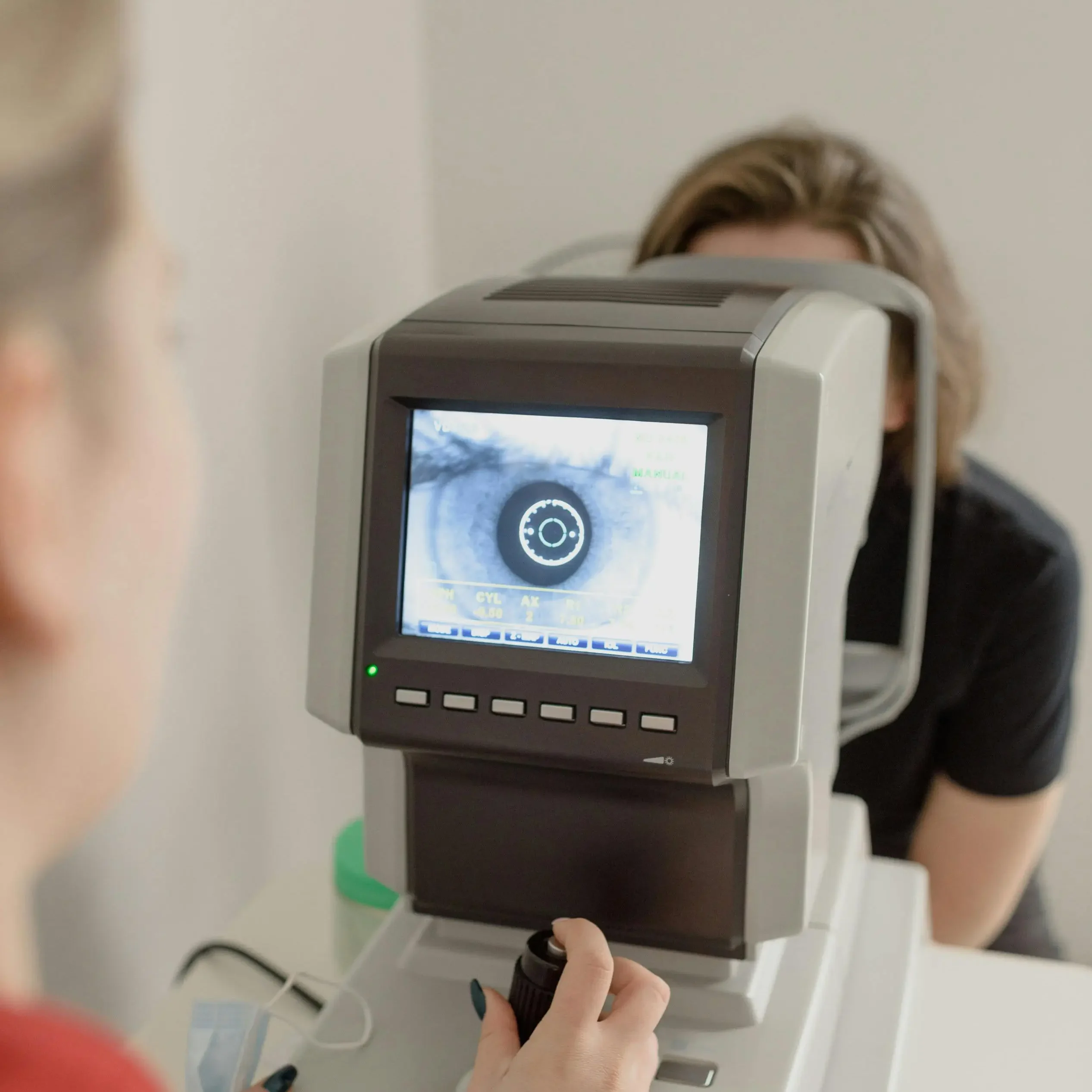
Living with keratoconus? These self-care tips will help you maintain your corneal health and keep your vision sharp. Let’s dive in!
Including any medications, eye drops, special contact lenses, and follow-up appointments. Consistency is key here.
Wear sunglasses with 100% UV protection. This is especially important after procedures like corneal cross-linking (CXL).
We know it can be tempting, but try to resist rubbing your eyes. This can exacerbate corneal changes. If you're experiencing dry eyes, use the prescribed artificial tears.
Use the recommended eyelid cleansers and follow proper hygiene practices, especially if you wear contact lenses. This helps prevent infections.
Hydration supports overall eye health. It can help alleviate some of the dry eye symptoms common in keratoconus patients.
If you have allergies, it's important to keep them under control. We can discuss strategies that won't interfere with your keratoconus management.
A balanced diet rich in vitamins A, C, E, and omega-3 fatty acids can support your overall eye health. Consider incorporating foods like leafy greens, fish, and citrus fruits.
If you experience any sudden changes in vision, increased pain, or signs of infection, please seek immediate care. Early intervention can be crucial.
Remember, managing keratoconus is a collaborative effort. By following these self-care practices, you can preserve your vision and eye health.
If you have any questions about these tips or your treatment, please don’t hesitate to give us a call.

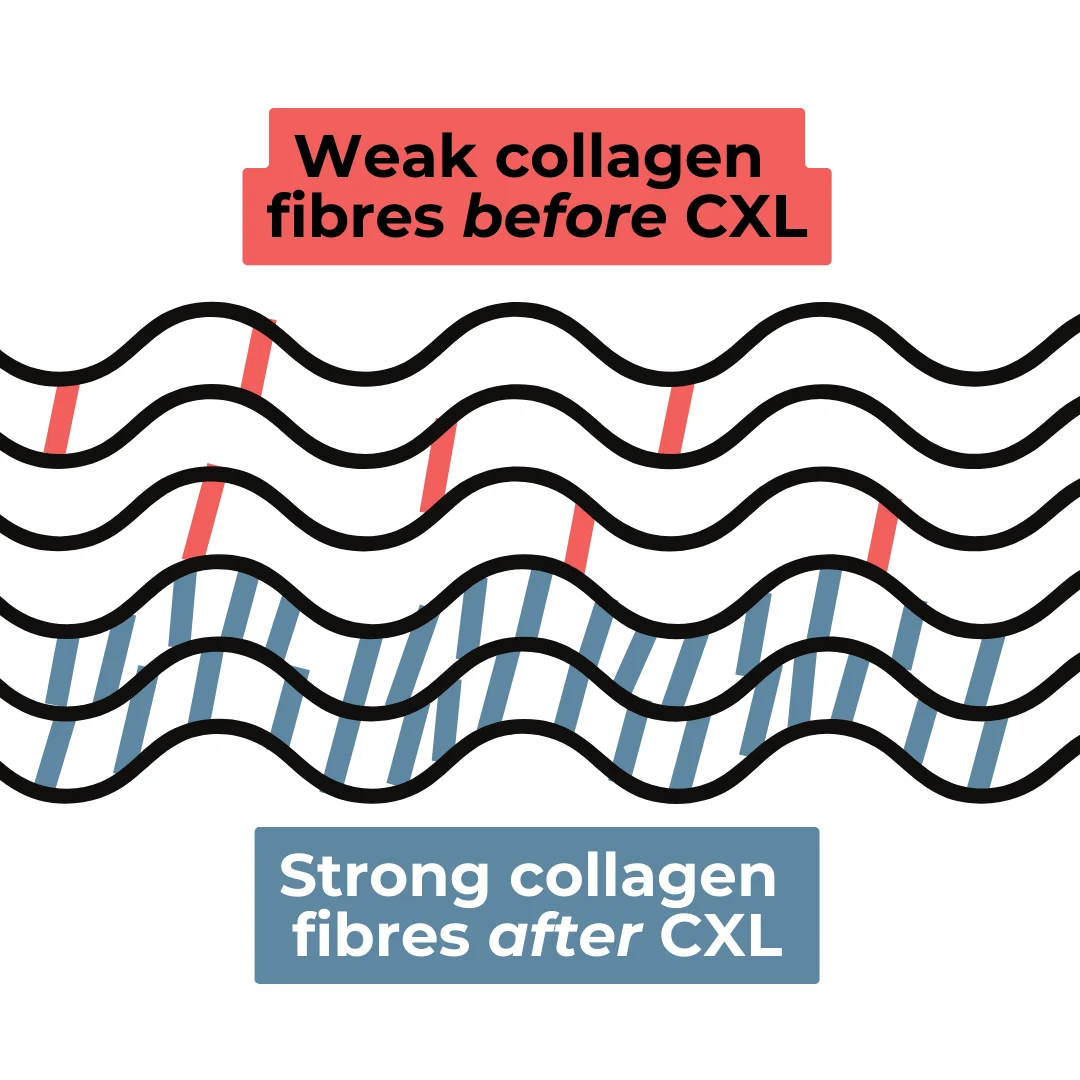
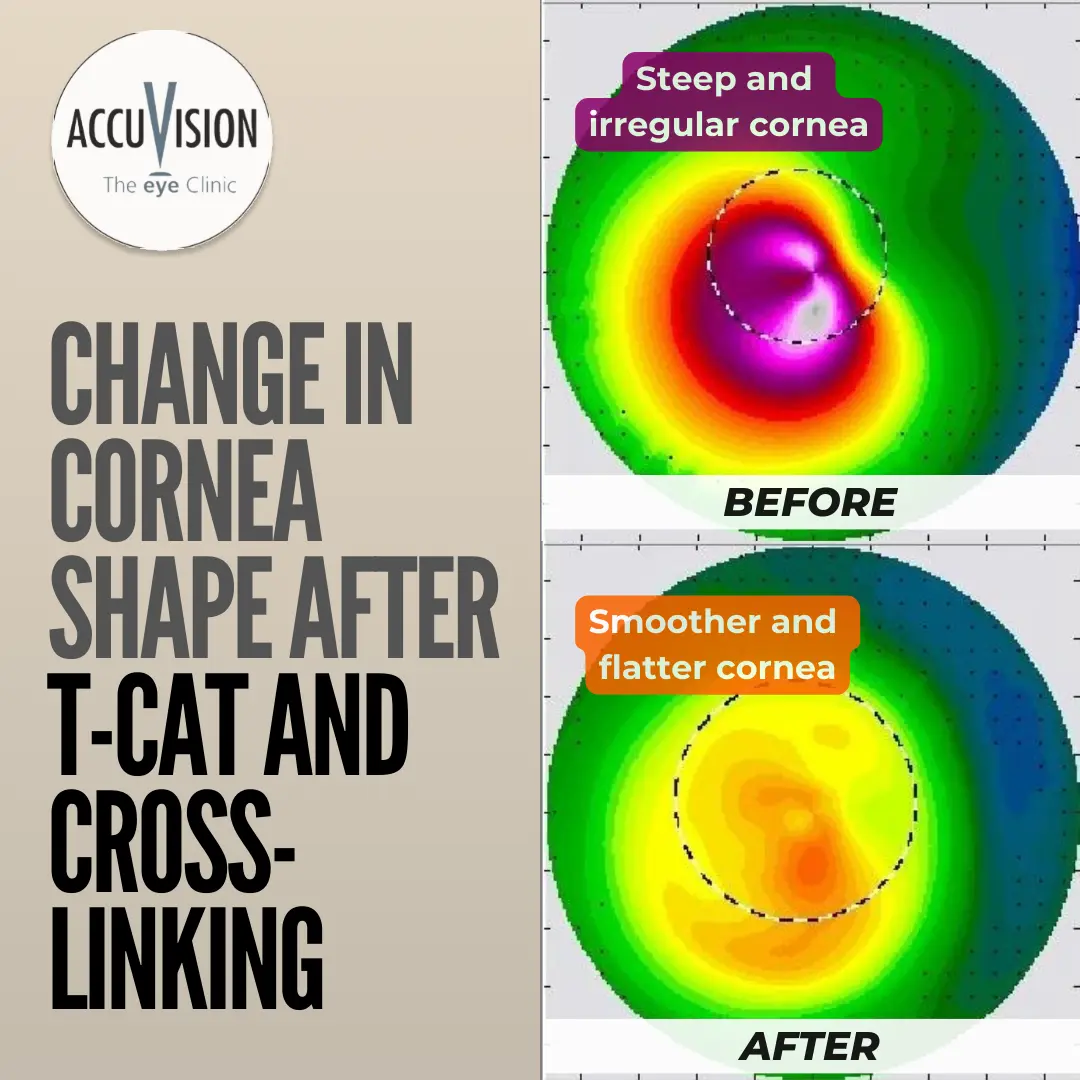
We use advanced diagnostics to map even extremely distorted corneas with perfect precision.
We use this diagnostic data to plan a customised Laser treatment to normalise corneal irregularities.
Many Keratoconus patients experience a substantial improvement in their vision after the T-CAT Laser treatment.
Finally, we apply CXL treatment to strengthen the cornea for lasting vision quality.
Diagnosed at 19, Charlene spent 9 years with ineffective rigid gas permeable lenses, frequent prescription changes and eye irritation until she found AccuVision:
“I describe this as previously looking through black and white television to now seeing things in high definition. This has been life changing for me, my family, and friends.”
She had lost hope due to unsuccessful treatments in the past:
“I had issues in the past with previous optometrists struggling to find RGPS to fit…. However, to my surprise… I managed to see out of my right eye for the first time in years. I was very emotional and it was almost a miracle that they had accomplished this.”
Our advanced screening, prompt diagnosis and holistic Keratoconus treatment provide life-changing outcomes for our patients, including:
All patients exhibited a reduction in irregular astigmatism
Most patients showed improved glasses prescription and Best Corrected Visual Acuity (BCVA).
Average improvement in topographical asymmetry was 7.8D. This meant reduced corneal distortion and improved profile.
Majority of patients stopped keratoconus progression.
No patients lost Best Corrected Visual Acuity
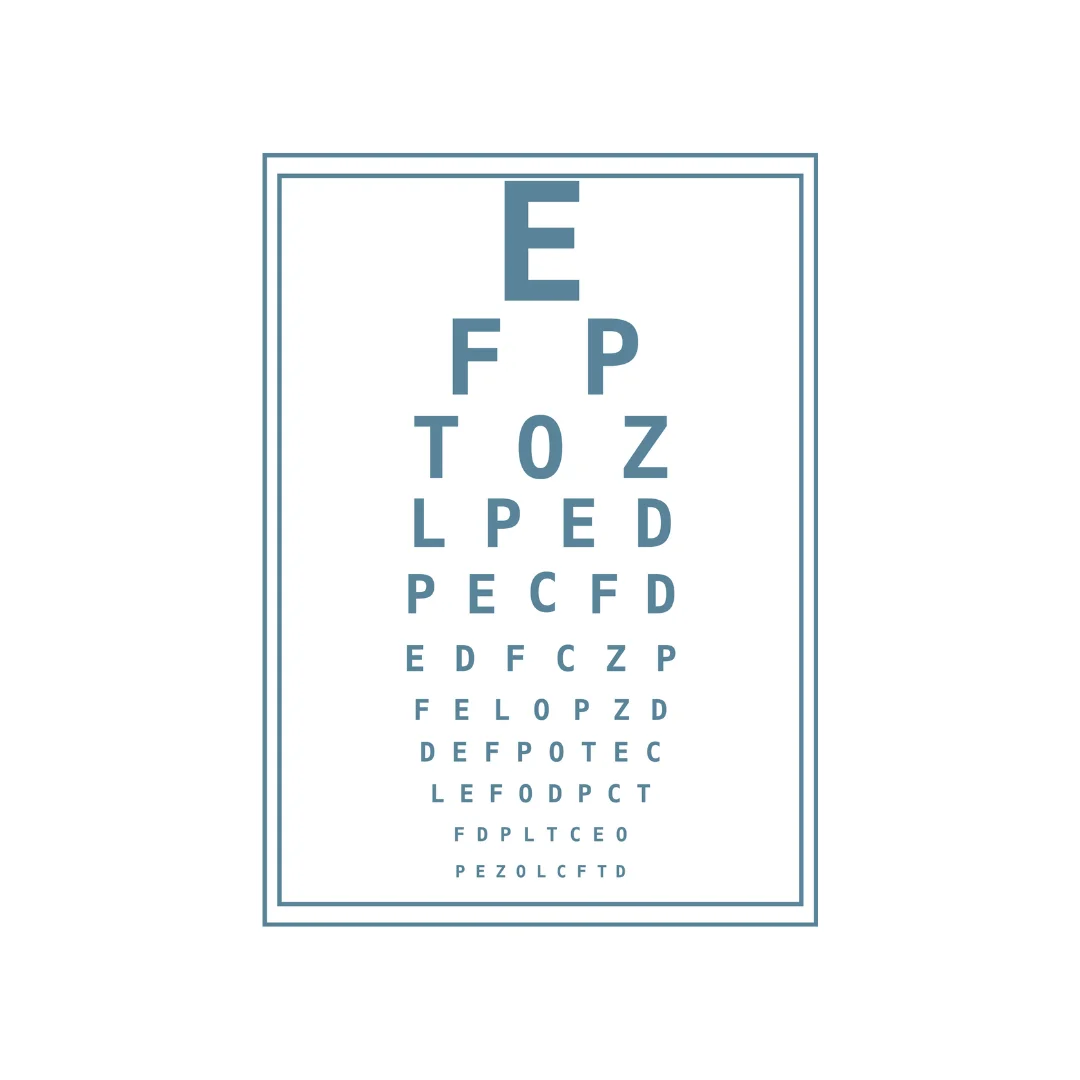
Patient | Difference along steepest meridian: | Gain/Loss BCVA (Snellen Lines) | ||
Pre-Op | Post-Op | Improvement | ||
SMR | 8D | 2.5D | 5.5D | 1 |
SML | 13D | 3D | 10D | = |
MGR | 15D | 2D | 13D | 3 |
GCR | 3D | 1.5D | 1.5D | +1/2 |
GCL | 8.5D | 0.5D | 8D | 1 |
SBR | 5D | 3D | 2D | = |
SBL | 8D | 3.5D | 4.5D | 1 |
PBR | 7D | 5D | 2D | = |
PBL | 13D | 7D | 6D | 2 |
IOR | 18D | 4D | 14D | 1 |
IOL | 21D | 11D | 10D | +1/2 |
PJR | 18D | 4D | 14D | 4 |
PJL | 10D | 2D | 8D | 1 |
JOR | 17D | 6D | 11D | = |
JOL | 14.5D | 2.5D | 12D | = |
MWR | 11D | 6D | 5D | 1 |
LSR | 6D | 2D | 4D | = |
PPR | 9D | 0D | 9D | 1 |
PPL | 7D | 3D | 4D | = |
Keratoconus cannot be completely cured, but its progression can be halted or slowed down through specialised treatments. These treatments aim to improve vision and stabilize the cornea.
The choice of treatment depends on the severity of the condition and individual factors. Regular monitoring and early intervention are crucial to managing keratoconus effectively.
Yes, many individuals with keratoconus can lead normal lives with proper management and treatment.
While it may require ongoing eye care and the use of corrective lenses or other interventions, most people with keratoconus can maintain their daily activities, including work, education, and recreational pursuits.
Regular check-ups with an eye care specialist are essential to monitor the condition and make necessary adjustments to treatment.
Keratoconus is a progressive eye condition, and its seriousness can vary from person to person.
In its early stages, it may cause mild visual disturbances that can be managed with glasses or soft contact lenses.
However, in advanced cases, when the cornea becomes severely distorted, it can lead to significant vision impairment.
While keratoconus is not life-threatening, its impact on quality of life underscores the importance of early diagnosis and appropriate treatment.
Two common signs of keratoconus include:
Other signs may include frequent changes in prescription eyeglasses or contact lenses, ghosting or multiple images, and eye irritation.
Keratoconus is typically managed rather than “fixed” in the traditional sense. The best chance
The choice of treatment depends on the individual’s specific condition and its severity. Early diagnosis and regular monitoring by an eye care specialist are crucial to determine the most appropriate treatment plan for each person with keratoconus.
While it’s possible to wear glasses for keratoconus, their effectiveness can be limited. Even after stabilizing the corneal surface as much as possible, it remains relatively irregular compared to a “normal” eye. This irregularity can compromise visual acuity, making customised contact lenses a preferable option for clearer vision.
Choosing the right vision correction method depends on individual factors and the extent of corneal irregularity. Your eye care specialist can recommend the best option based on your specific needs and condition.
Soft contact lenses moulds to the shape of the cornea, which, if very distorted from Keratoconus, can mean limited improvement in vision.
In contrast, rigid or scleral lenses lenses are customised to fit to the unique shape of each cornea. They effectively “mask” the corneal distortion, resulting in improved vision quality.
After CXL treatment, the corneal surface is much more regular and therefore more responsive to a lens. Once the lens-fit is improved, vision is enhanced and lenses become more comfortable.
Additionally, the Accuvision Team is highly experienced and specialised in customised contact lens fits. This is how many of our patients achieve comfortable vision quality, even if they’ve struggled with lenses previously.
All rights reserved, AccuVision makes this website available and free to all users for the sole purpose of providing information about AccuVision and its services.
This site contains links to other sites. AccuVision is not responsible for the privacy practices of other sites that are linked to us. Other websites may make forums, message boards, and/or newsgroups available to its users to post, retrieve, and discuss health-related issues. Please remember that any information you voluntarily post, except where expressly noted otherwise, may be accessible and is public information. Please use caution when disclosing personal information. If you have any questions regarding this statement or your dealings with our website please email info@accuvision.co.uk.
An initial virtual consultation for Laser Vision Correction is complimentary. Please note, AccuVision may charge for subsequent consultations and for consultations related to other treatments or medical conditions.
All eye surgery procedures carry a level of risk including not obtaining the desired outcome through varying levels of vision loss. Your eye surgeon will discuss the risks and benefits including ones specific to your circumstances at the time of your assessment consultation.
Prescriptions outside the eligible range are always competitively priced.
In this Privacy Notice we use “we” or “us” or “our” or “AccuVision” to refer to the company who is using your personal information, and the clinicians and employees who provide and assist in your enquiry or treatment.
The personal information that we collect will depend on your relationship with us. We will collect different information depending on whether or not you are already a patient of AccuVision.
We may use “special categories of personal information” (otherwise known as “special categories of data”) about you, such as information relating to your physical and mental health. For example, if you are a patient we will need to use information about your health in order to treat you.
If you provide personal information to us about other individuals (including medical or financial information) you should inform the individual about the contents of this Privacy Notice. We will process such information in accordance with this Privacy Notice.
In addition, you should note that in the event you amend data which we already hold about you (for instance by amending a pre-populated form) then we will update our systems to reflect the amendments. Our systems will continue to store historical data.
When you enquire via our website, the personal information we hold about you may include the following:
As a patient of AccuVision, we will hold information relating to your medical treatment which is known as a special category of personal data under the law, meaning that it must be handled even more sensitively. The special categories of personal information we hold about you may include the
following:
The confidentiality of your medical information is important to AccuVision. We make every effort to prevent unauthorised access to and use of information relating to your current or former physical and mental health. In doing so, AccuVision complies with UK data protection law, including the Data
Protection Act 2018, and all applicable medical confidentiality guidelines issued by professional bodies including, but not limited to, the General Medical Council and the General Optical Council.
From 25 May 2018, the current Data Protection Act will be replaced by the EU General Data Protection Regulation (GDPR) and a new Data Protection Act. All uses of AccuVision information will comply with the GDPR and the new Data Protection Act from that date onwards
We may collect personal information from a number of different sources including, but not limited to:
Information may be collected directly from you when:
When you register as a patient with AccuVision, we may collect further information from you, but also from other sources such as:
Our patients will usually receive healthcare from other organisations in addition to AccuVision, and so in order to provide you with the best treatment possible we may have to collect personal information about you from other organisations. These may include:
In order to communicate with you, we are likely to do this by telephone, SMS, email, and / or post.
If we contact you using the telephone number(s) which you have provided (landline and/or mobile), and you are not available which results in the call being directed to a voicemail and/or answering service, we may leave a voice message on your voicemail and/or answering service as appropriate.
Please note providing your mobile number and email address and stating a preference to be communicated by a particular method will be taken as an affirmative confirmation that you are happy for us to contact you in that manner.
We may ‘process’ your information for a number of different purposes, which is essentially the language used by the law to mean using your data. Each time we use your data we must have a legal justification to do so. The particular justification will depend on the purpose of the proposed use of your data. When the information that we process is classed as “special category of
personal information”, we must have a specific additional legal justification in order to use it as proposed.
Generally we will rely on the following legal justifications, or ‘grounds’:
Please note that failure to provide your information further to a contractual requirement with us or a clinician may mean that we are unable to set you up as a patient or facilitate the provision of your healthcare on our systems.
One legal ground for processing personal data is where we do this in pursuit of legitimate interests and those interests are not overridden by your privacy rights. Where we refer to use for our appropriate business needs, we are relying on this legal ground: Special categories of personal information includes information about your health.
You have a range of rights in respect of your personal data, as set out in detail below. This includes the right to object to AccuVision using your personal information in a particular way (such as sharing that information with third parties), and we must stop using it in that way unless specific exceptions apply as a consequence of our legal obligations
From time to time, we may share your personal information within our group or with third parties.
We may disclose your information to the third parties listed below for the purposes described in this Privacy Notice. This might include:
We may communicate with these third parties in a variety of ways including, but not limited to, email, post, fax and telephone.
We may also use your personal information to provide you with information about products or services relating to on going eye care or treatment which may be of interest to you where you have provided your consent for us to do so.
If you no longer wish to receive marketing emails sent by us, you can click on the “unsubscribe” link that appears in all of our emails, otherwise you can always contact us using the details set out in section 5 to update your contact preferences.
We do not provide your personal information to any external market research agencies nor do we sell your data to third parties.
We will only keep your personal information for as long as reasonably necessary to fulfill the relevant purposes set out in this Privacy Notice or required in order to comply with our legal and regulatory obligations.
If you would like further information regarding the periods for which your personal information will be stored, please contact our DPO for further details.
We (or third parties acting on our behalf) may store or process information that we collect about you in countries outside the European Economic Area (“EEA”). Where we make a transfer of your personal information outside of the EEA we will take the required steps to ensure that your personal information is protected.
We will only do so to the extent that it is relevant and necessary. The United States and the EEA have in place a framework, known as Privacy Shield, to facilitate compliance with data protection obligations when transferring personal data. Privacy Shield has been assessed by the EU Commission, and deemed to provide adequate protection to personal data.
If you would like further information regarding the steps we take to safeguard your personal information, please contact the DPO.
Under data protection law you have certain rights in relation to the personal information that we hold about you. These include rights to know what information we hold about you and how it is used. You may exercise these rights at any time by contacting us using the details set out within this notice.
There are some special rules about how these rights apply to health information as set out in legislation including the Data Protection Act (current and future), the General Data Protection Regulation as well as any secondary legislation which regulates the use of personal information.
If you make a large number of requests or it is clear that it is not reasonable for us to comply with a request then we do not have to respond. Alternatively, we can charge for responding.
In some circumstances, you have the right to request that we delete or amend how we process the personal information we hold about you. However, there are exceptions to this right and in certain circumstances we can refuse to delete the information in question. In particular, for example, we do not have to comply with your request if it is necessary to keep your information in order to perform tasks which are in the public interest, including public health, or for the purposes of establishing, exercise or defending legal claims, or if your request contradicts our legal responsibilities.
We may update this Privacy Notice from time to time to ensure that it remains accurate. In the event that there are any material changes to the manner in which your personal information is to be used then we will provide you
with an updated copy of this Privacy Notice.
AccuVision Ltd has an appointed data protection officer (“DPO”). The DPO helps ensure that the company complies with data protection law.
The DPO can be contacted by:
a) Telephone: 0330 123 2020
b) E-mail: info@accuvision.co.uk
c) Post: Data Protection Officer, AccuVision Ltd., 42-48 New Kings Road, London SW6 4LS.
If you would like further information about any of the matters in this Privacy Notice or have any other questions about how we collect, store or use your personal information, please contact the DPO using the details above.
Achieve clear vision under the personalised guidance of our clinicians. Simply fill this form and we will be in touch to answer all of your questions. Schedule your consultation now — proceed with informed confidence: